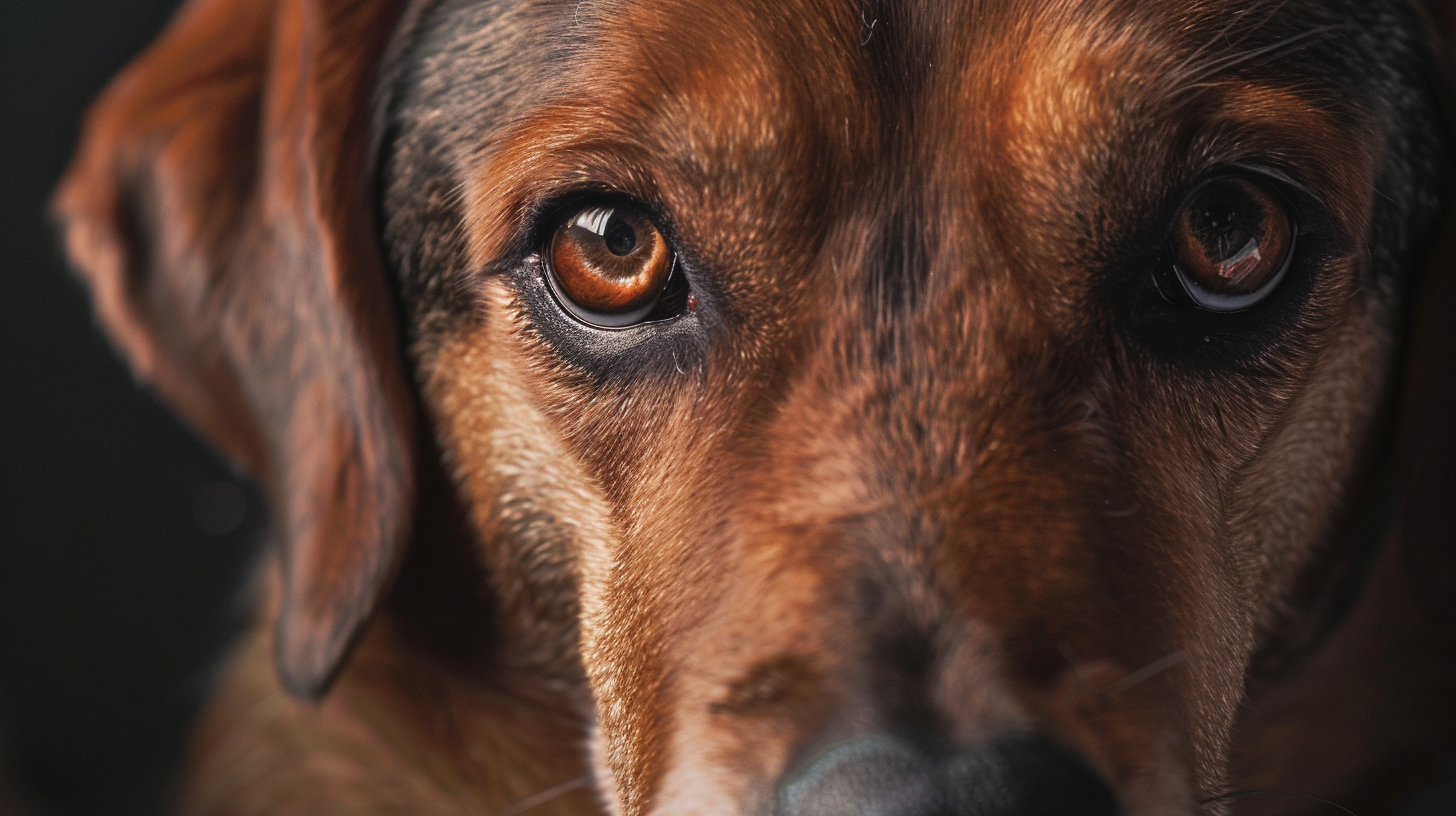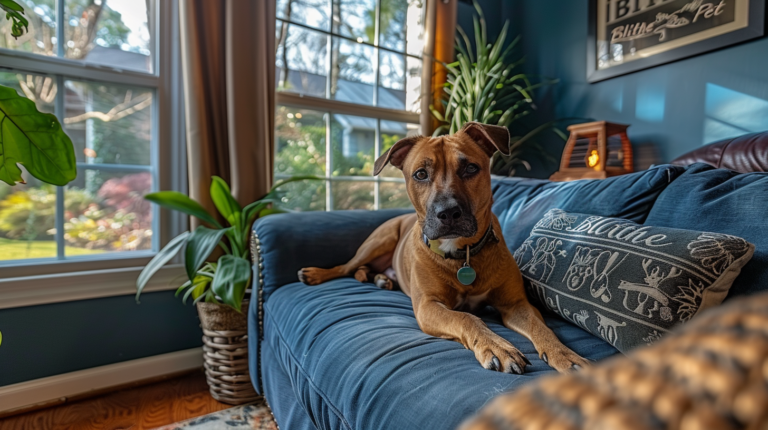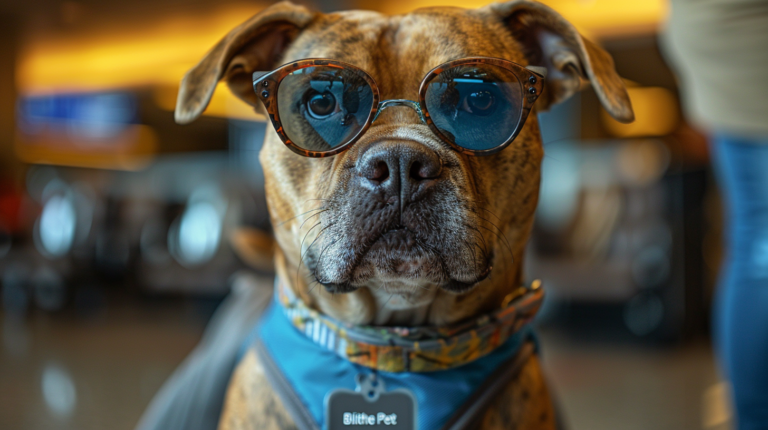Discover the hilarious world of side eye dog expressions! Learn 5 funny facial expressions, their meanings, and why dogs give us that classic judgmental look. Perfect for dog lovers!
Table of Contents
Every dog owner has experienced that moment – you’re reaching for the last slice of pizza, or perhaps you’ve just told your furry friend it’s bath time, and suddenly you’re met with that look. The side eye dog expression has become an internet sensation, capturing the hearts of millions with its perfect blend of sass, judgment, and undeniable humor. This iconic facial expression, where dogs turn their heads slightly while keeping their eyes fixed on you with what can only be described as canine skepticism, has spawned countless memes and social media posts.
Understanding your dog’s facial expressions goes beyond just entertainment value. These subtle communications are windows into your pet’s emotional state, helping you build a stronger bond and respond appropriately to their needs. The side eye dog phenomenon represents just one fascinating aspect of canine body language that every pet owner should recognize and appreciate.
In this comprehensive guide, we’ll explore five of the most amusing side eye dog expressions, decode their meanings, and help you understand what your four-legged companion is really trying to tell you. Whether you’re a new pet owner or a seasoned dog enthusiast, these insights will enhance your relationship with your canine companion while giving you plenty of reasons to smile.
The Science Behind Canine Facial Expressions
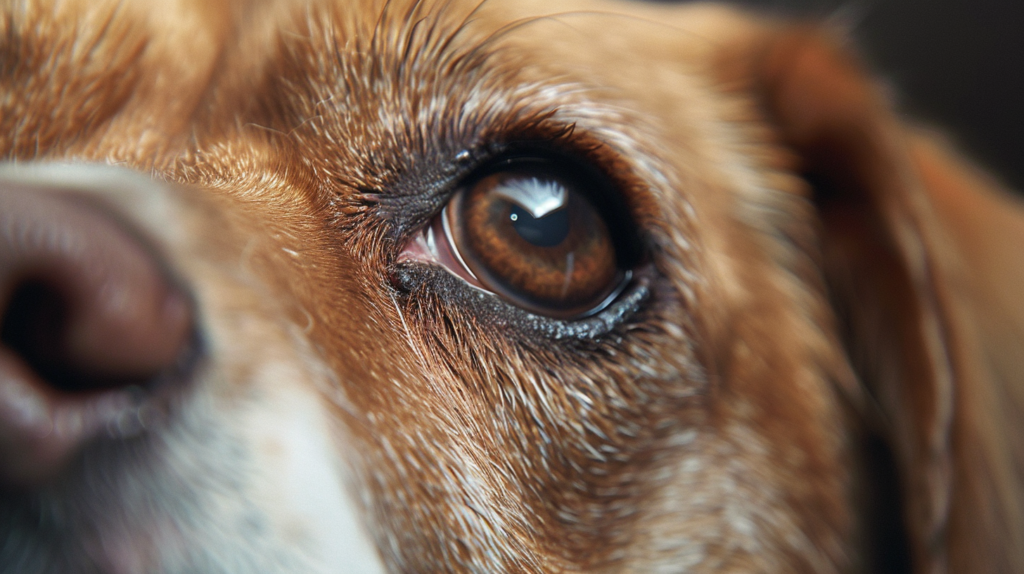
Before diving into the specific expressions, it’s important to understand the fascinating science behind how dogs communicate through their faces. Recent research from the University of Portsmouth found that dogs produce significantly more facial expressions when humans are paying attention to them, suggesting these expressions are indeed forms of communication rather than mere emotional reflexes.
Dogs have evolved alongside humans for over 15,000 years, developing sophisticated methods of non-verbal communication that help them navigate their relationships with us. The muscles around a dog’s eyes and mouth are particularly expressive, allowing for a wide range of subtle communications that observant owners can learn to interpret.
Evolutionary Adaptation
The ability to make expressive faces, including the notorious side eye, likely evolved as dogs became more integrated into human society. Dogs that could effectively communicate their needs, emotions, and reactions to their human companions were more likely to receive care, food, and protection. This evolutionary pressure has resulted in the incredibly expressive faces we see in modern domestic dogs.
According to Dr. Juliane Kaminski, a comparative psychologist who has studied canine facial expressions extensively, dogs have developed unique facial muscles that wolves don’t possess, specifically to enhance their communication with humans. These adaptations make expressions like the side eye possible and meaningful.
1. The Classic “Are You Serious?” Side Eye

Description and Recognition
The classic side eye dog expression is perhaps the most recognizable and meme-worthy of all canine facial expressions. This look typically involves your dog turning their head at a slight angle while maintaining direct eye contact with you, often accompanied by slightly raised eyebrows and a closed mouth. The overall effect is one of profound skepticism and mild disapproval.
Visual Characteristics:
- Head turned 15-30 degrees to one side
- Eyes remain fixed on the target (usually you)
- Eyebrows slightly raised or furrowed
- Mouth typically closed or slightly open
- Body posture remains relaxed but alert
When You’ll See It
This expression commonly appears during several scenarios:
Training Sessions: When you’re asking your dog to perform a trick they consider beneath their dignity, such as “shake hands” for the hundredth time, you might receive this look that clearly says, “Really? Again?”
Treat Distribution: If you’re eating something delicious and haven’t offered to share, expect this expression accompanied by the weight of canine judgment. It’s particularly common when you’re enjoying human food that your dog knows they’re not supposed to have but desperately wants anyway.
Bedtime Enforcement: Many dogs perfect this look when they’re comfortable on the couch and you suggest it’s time for bed. The side eye in this context translates roughly to “I don’t think so, human.”
Behavioral Context
Research from the American Kennel Club indicates that this type of expression often occurs when dogs are processing conflicting information or experiencing mild frustration. Your dog understands what you’re asking but may not be entirely enthusiastic about complying. It’s their way of expressing mild protest while maintaining their relationship with you.
2. The “I’m Not Impressed” Judge-Mental Stare
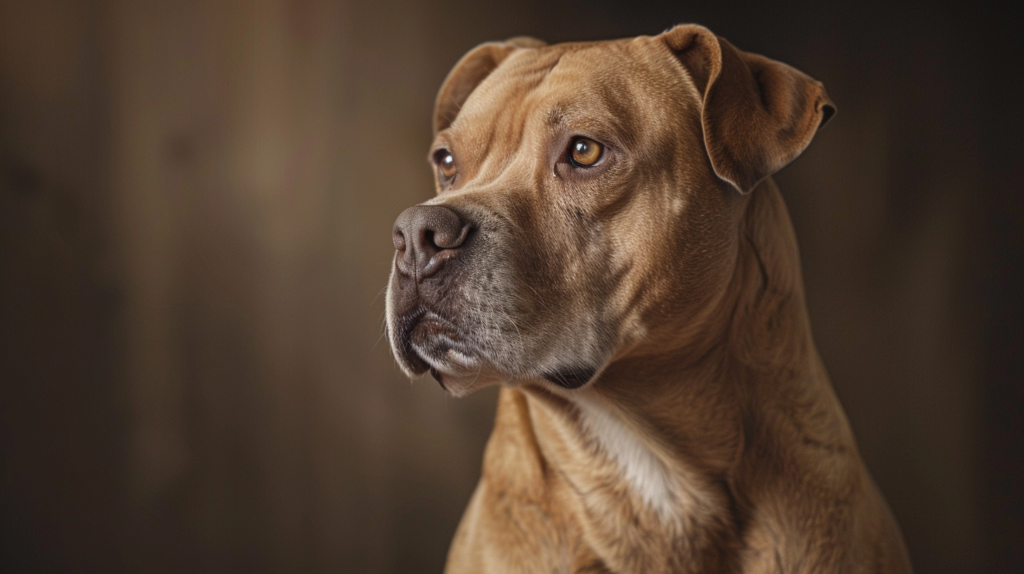
The Ultimate Canine Critique
This variation of the side eye dog expression takes skepticism to the next level. Unlike the classic side eye, this look involves a more pronounced head turn, often accompanied by a slight lowering of the eyelids that creates an unmistakably judgmental appearance. Some dogs have mastered this expression to such a degree that they could serve as reality TV show judges.
Identifying Features:
- More pronounced head angle (30-45 degrees)
- Slightly narrowed or half-closed eyes
- Possible slight downturn of the mouth corners
- Ears may be positioned forward or neutral
- Overall body language remains calm but alert
Common Triggers
Fashion Choices: Dog owners who dress their pets in costumes or accessories often receive this look. Your dog’s expression clearly communicates their opinion about that festive holiday sweater or decorative bow tie.
New Household Rules: When you implement new rules like “no dogs on the furniture” or “no begging at the dinner table,” expect this judgmental stare as your dog evaluates your audacity in changing the established order.
Grooming Time: Many dogs deploy this expression during grooming sessions, particularly when faced with nail clipping or teeth brushing. The look suggests they’re questioning your life choices as much as their own situation.
Understanding the Message
Animal behaviorists suggest that this expression often indicates cognitive conflict. Your dog is processing information and making judgments about the situation. Unlike aggressive or fearful expressions, this side eye maintains a relatively relaxed overall demeanor, indicating that while your dog may not approve, they’re not distressed or threatened.
3. The Sneaky “I Wasn’t Doing Anything” Glance
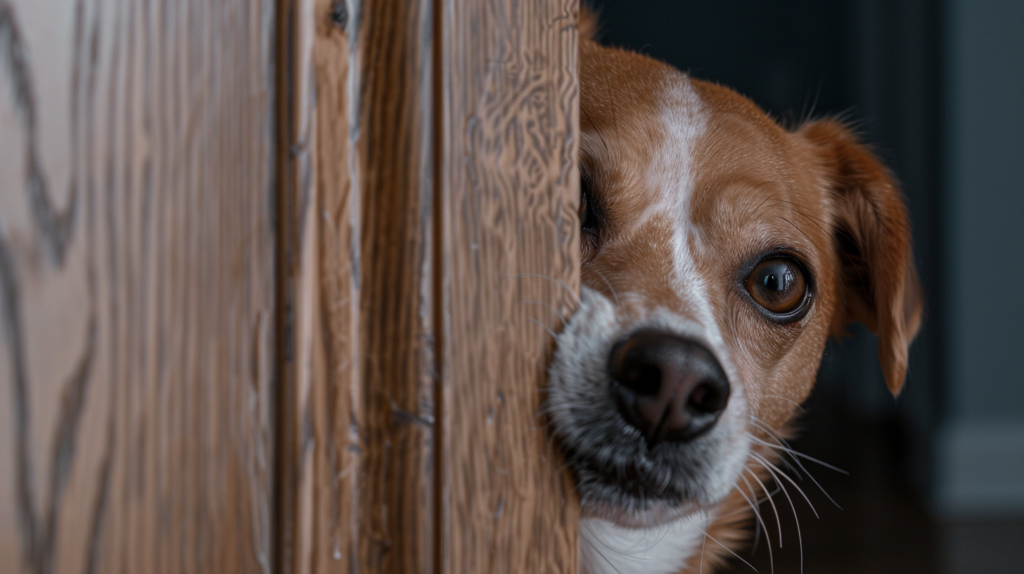
Caught in the Act
This particular side eye dog expression is a masterclass in canine deception. It typically occurs when dogs are caught engaging in forbidden activities – or when they’re about to engage in them. The expression combines the classic side eye with an additional element of calculated innocence that would make professional actors jealous.
Distinctive Characteristics:
- Quick, furtive glance with minimal head movement
- Eyes may dart between the owner and the forbidden object/activity
- Possible freeze in mid-action
- Tail position varies but often neutral or slightly lowered
- Body posture may show signs of tension or readiness to flee
Behavioral Scenarios
Kitchen Counter Surfing: When you catch your dog in the process of investigating what smells delicious on the kitchen counter, this expression often appears. Your dog’s eyes say, “I was just… checking for gas leaks up here.”
Garbage Archaeology: Dogs caught rummaging through trash cans are masters of this expression. The look suggests they were merely conducting important research into household waste management.
Forbidden Furniture: When discovered on beds, couches, or chairs that are off-limits, dogs often deploy this sideways glance that attempts to convey complete innocence despite obvious evidence to the contrary.
The Psychology Behind the Look
Interestingly, research suggests that dogs do understand when they’re breaking rules, even if they sometimes choose to break them anyway. This expression often indicates that your dog is aware they’re pushing boundaries and is gauging your reaction. It’s a form of social intelligence that demonstrates their understanding of household dynamics and their place within them.
4. The Confused “What Just Happened?” Expression

Processing the Incomprehensible
This side eye dog variation appears when dogs encounter situations that challenge their understanding of the world. Unlike the judgmental or sneaky versions, this expression shows genuine confusion mixed with curiosity. It’s often accompanied by a slight head tilt that adds to the overall bewildered appearance.
Recognition Points:
- Head tilted at various angles
- Eyes wide with raised eyebrows
- Mouth may be slightly open
- Ears positioned forward and alert
- Body posture shows engagement and curiosity
Common Confusion Triggers
Technology Interactions: Modern dogs often display this expression when confronted with video calls, smart home devices, or television screens showing other animals. The look suggests they’re trying to process information that doesn’t quite fit their understanding of reality.
Magic Tricks: Simple magic tricks or sleight of hand often elicit this expression. When you make a treat “disappear” and then “reappear,” your dog’s side eye clearly indicates they know something unusual just happened but can’t quite figure out what.
Unusual Sounds: Strange noises from household appliances, musical instruments, or even your attempts at singing can trigger this confused side eye as your dog tries to categorize and understand the source.
Cognitive Processing
Veterinary behaviorists note that this expression often indicates active cognitive processing. Your dog is working to understand new information and integrate it with their existing knowledge. This type of side eye demonstrates the complex thinking processes that dogs engage in when confronted with novel situations.
5. The Dramatic “My Life is So Hard” Sigh-Eye
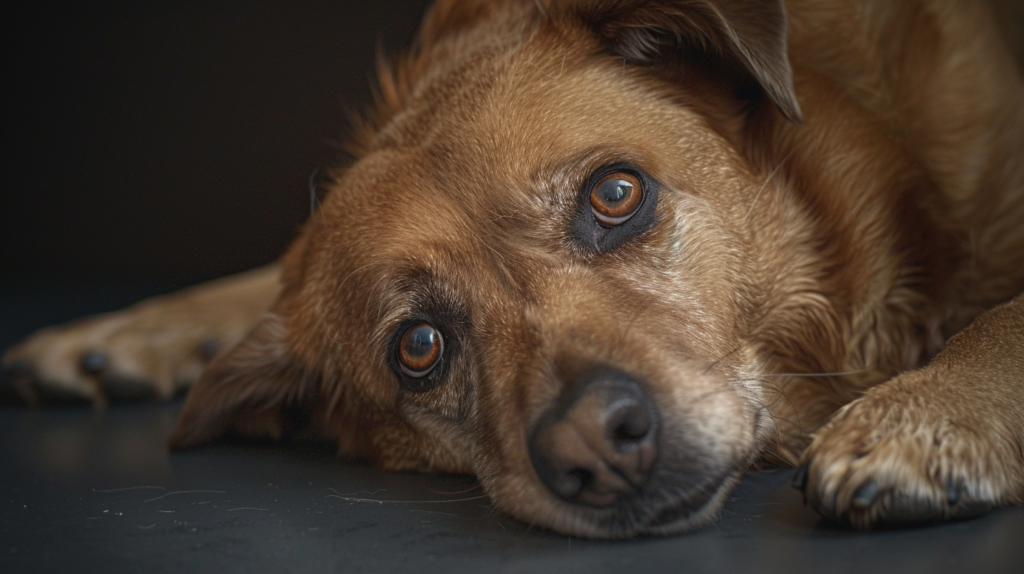
The Canine Drama Queen/King
This elaborate variation of the side eye dog expression combines visual drama with auditory effects. It typically includes the classic side eye accompanied by an exaggerated sigh, creating a performance that would be worthy of a soap opera. This expression represents the pinnacle of canine dramatic flair.
Performance Elements:
- Pronounced side eye with possible eye-rolling motion
- Deep, audible sigh or dramatic breathing
- Possible head droop or lean
- Relaxed but deliberately slumped body posture
- May include additional sound effects like groans or whimpers
Dramatic Triggers
Exercise Delays: When it’s clearly time for a walk but you’re still finishing up human tasks, this dramatic side eye often appears. Your dog’s expression and accompanying sigh suggest they’re suffering greatly from this minor delay.
Attention Deficits: Dogs who feel they’re not receiving adequate attention may deploy this expression while strategically positioning themselves in your line of sight. The message is clear: their emotional needs are not being met, and they want you to know about it.
Comfort Disruptions: Being asked to move from a comfortable sleeping spot or having their nap interrupted can trigger this dramatic response. The side eye combined with sighing suggests they’re making a significant sacrifice for your convenience.
The Art of Canine Manipulation
This expression demonstrates sophisticated social intelligence. Dogs have learned that dramatic displays can be effective in capturing human attention and potentially changing outcomes. Research from the University of California, Davis, suggests that dogs are capable of what researchers term “emotional contagion” – they can influence human emotions through their own expressions and behaviors.
Understanding Your Dog’s Side Eye: A Quick Reference Guide
| Expression Type | Head Position | Eye Characteristics | Common Triggers | Likely Message |
| Classic “Are You Serious?” | Slight turn (15-30°) | Direct stare, raised brows | Training, treat requests | Mild skepticism, reluctant compliance |
| Judge-Mental Stare | Pronounced turn (30-45°) | Narrowed, half-closed | Fashion choices, new rules | Disapproval, questioning your decisions |
| Sneaky Glance | Minimal movement | Darting, furtive | Caught misbehaving | Awareness of wrongdoing, testing boundaries |
| Confused Processing | Variable tilt | Wide, alert | Technology, unusual events | Cognitive processing, seeking understanding |
| Dramatic Sigh-Eye | Pronounced with droop | Rolling, exaggerated | Delays, attention needs | Emotional manipulation, seeking sympathy |
The Role of Breed in Side Eye Expressions
Different dog breeds have varying capacities for facial expression due to their physical characteristics. Breeds with more prominent eyes and mobile facial features tend to be more expressive, while flat-faced breeds may have different expression patterns.
Highly Expressive Breeds
Border Collies and Australian Shepherds: These intelligent herding breeds are masters of the side eye, using it as part of their natural communication repertoire developed for working with livestock and humans.
Golden Retrievers and Labradors: Despite their generally cheerful dispositions, these breeds can deliver impressive side eye expressions, particularly when food is involved.
German Shepherds: Known for their intelligence and strong personalities, German Shepherds often use side eye expressions as part of their assessment of situations and people.
Breed-Specific Considerations
Bulldogs and Pugs: Flat-faced breeds may have less pronounced side eye expressions due to their facial structure, but they compensate with other forms of body language and vocal communications.
Huskies and Malamutes: These vocal breeds often combine side eye expressions with dramatic vocalizations, creating elaborate communication displays.
Building Better Communication with Your Side Eye Dog
Understanding your dog’s side eye expressions is just the beginning of improving your communication. Here are practical strategies for responding appropriately to these canine communications:
Acknowledgment and Response
When your dog gives you a side eye expression, acknowledging their communication can strengthen your bond. This doesn’t mean giving in to every demand, but rather showing that you understand their message.
For Skeptical Expressions: Maintain consistency in your requests while offering positive reinforcement when your dog complies, even reluctantly.
For Judgmental Looks: Stay confident in your decisions while considering whether your dog’s “feedback” might have merit. Sometimes that judgmental side eye is pointing out something genuinely problematic.
For Confused Expressions: Provide clear, consistent cues and allow your dog time to process new information. Patience during these moments builds trust and understanding.
Training Considerations
You can actually incorporate your dog’s natural expressiveness into training routines. Many professional dog trainers recommend acknowledging your dog’s emotional state before proceeding with training exercises.
Positive Reinforcement: When your dog gives you that classic side eye but still complies with your request, reward them enthusiastically. This teaches them that communication is valued and that cooperation is rewarded.
Consistency: Maintain consistent responses to your dog’s expressions. If you laugh at the dramatic sigh-eye one day but ignore it the next, you may be sending mixed messages.
The Health Aspect: When Side Eye Might Indicate Issues
While most side eye expressions are normal communication, it’s important to distinguish between behavioral expressions and potential health concerns.
Normal vs. Concerning Signs
Normal Side Eye Characteristics:
- Occurs in appropriate contexts
- Eyes are clear and bright
- No signs of pain or discomfort
- Dog remains responsive and engaged
- Expression varies with situation
When to Consult a Veterinarian:
- Persistent one-sided head tilting
- Signs of pain or discomfort
- Discharge from eyes or nose
- Changes in appetite or behavior
- Loss of balance or coordination
Eye Health Considerations
Regular eye examinations should be part of your dog’s routine veterinary care. Some conditions that might affect your dog’s expressions include:
Dry Eye (Keratoconjunctivitis Sicca): Can cause discomfort that might alter your dog’s normal expressions.
Corneal Injuries: May cause your dog to favor one eye, potentially affecting their typical side eye expressions.
Age-Related Changes: Senior dogs may develop cataracts or other vision changes that could impact their expressiveness.
Frequently Asked Questions
Why does my dog give me side eye when I’m eating?
Your dog’s side eye during meals is a sophisticated form of communication combining hope, expectation, and mild judgment. Dogs have learned that making eye contact during human meals sometimes results in food sharing. The side eye specifically suggests your dog is maintaining social politeness while still expressing their desire for your food. This behavior is rooted in pack dynamics where food sharing indicates social bonds.
Is it normal for my dog to give side eye to strangers?
Yes, side eye toward strangers is completely normal and often indicates cautious assessment rather than aggression. Dogs use this expression to evaluate new people while maintaining a non-threatening posture. It’s part of their social intelligence, allowing them to gather information about unfamiliar individuals without appearing confrontational. However, if the side eye is accompanied by growling, raised hackles, or other signs of stress, it may indicate discomfort that should be addressed.
Can I teach my dog to give side eye on command?
While you can’t exactly teach the emotional context behind genuine side eye expressions, you can train dogs to perform similar head movements and eye positions as tricks. Many professional animal trainers work with dogs to create “looks” on command for entertainment purposes. However, authentic side eye expressions are spontaneous emotional communications that occur naturally in response to specific situations.
Do all dogs give side eye, or is it breed-specific?
All dogs are capable of side eye expressions, though the prominence and frequency vary by individual personality and breed characteristics. Dogs with more mobile facial features and prominent eyes tend to have more noticeable side eye expressions. However, even breeds with less expressive faces communicate through subtle eye movements and head positioning that serve similar communicative functions.
What should I do when my dog gives me judgmental side eye?
The best response to judgmental side eye is to acknowledge your dog’s communication without necessarily changing your behavior if you’re doing something appropriate. You can verbally acknowledge their opinion with phrases like “I see you” or “I know you don’t like this,” which validates their communication. Maintain consistency in your actions while showing that you understand their perspective. This approach builds trust and communication without reinforcing demanding behavior.
How can I tell if my dog’s side eye is playful or serious?
Context and accompanying body language are key to interpreting your dog’s side eye. Playful side eye typically occurs during positive interactions and is accompanied by relaxed body posture, possible play bows, or tail wagging. Serious side eye might indicate genuine discomfort, confusion, or mild stress, often accompanied by more tense body language. Consider the situation, your dog’s overall demeanor, and any other signals they’re giving to accurately interpret their message.
Creating Positive Interactions Around Side Eye Expressions
Understanding your dog’s side eye expressions opens up opportunities for enhanced communication and stronger bonding. Here are strategies for building positive interactions around these amusing communications:
Responsive Communication
When your dog gives you a side eye expression, try responding with your own exaggerated facial expressions. Many dogs enjoy this type of interactive play and will respond with even more elaborate expressions of their own.
Photography and Documentation
Many pet owners enjoy capturing their dog’s side eye expressions in photographs. This can become a fun bonding activity, though it’s important to ensure your dog is comfortable with cameras and photography sessions.
Social Learning
Dogs often learn side eye expressions by observing other dogs and even humans. Multi-dog households frequently see dogs “teaching” each other effective communication strategies, including various forms of expressive eye contact.
The Cultural Impact of Side Eye Dogs
The side eye dog phenomenon has transcended simple pet ownership to become a significant part of internet culture and social media. These expressions have become powerful tools for human communication, with side eye dog memes being used to express skepticism, judgment, and humor in online conversations.
Meme Culture and Social Media
Platforms like Instagram, TikTok, and Twitter are filled with side eye dog content that resonates with millions of users. This widespread appeal suggests that these expressions tap into universal human experiences of skepticism, judgment, and humor.
Therapeutic Value
Many people find side eye dog expressions genuinely therapeutic, providing moments of levity and connection during stressful times. The ability to share these amusing moments with others creates communities of pet owners who bond over similar experiences.
For more expert pet care tips and product recommendations, visit BlithePet.com — your trusted source for pet wellness.
Conclusion
The world of side eye dog expressions offers a delightful window into the complex emotional and social lives of our canine companions. From the classic “are you serious?” look to the dramatically theatrical sigh-eye, these expressions demonstrate the sophisticated communication abilities that dogs have developed through thousands of years of evolution alongside humans.
Understanding and appreciating these facial expressions enhances the bond between you and your dog while providing endless entertainment and opportunities for deeper connection. Whether your dog is delivering judgment about your fashion choices, expressing confusion about modern technology, or dramatically sighing about life’s minor inconveniences, these moments of communication strengthen the unique relationship between humans and dogs.
By learning to read and respond appropriately to your dog’s side eye expressions, you’re not just becoming a better pet owner – you’re participating in an ancient form of interspecies communication that continues to evolve and delight. These expressions remind us that our dogs are not just pets but complex individuals with opinions, emotions, and personalities that deserve recognition and respect.
The next time your dog gives you that perfect side eye expression, take a moment to appreciate the depth of communication happening in that single look. It’s a testament to the remarkable relationship between humans and dogs, built on mutual understanding, respect, and more than a little bit of humor.
Have a similar experience with your pet? Share it in the comments below!

